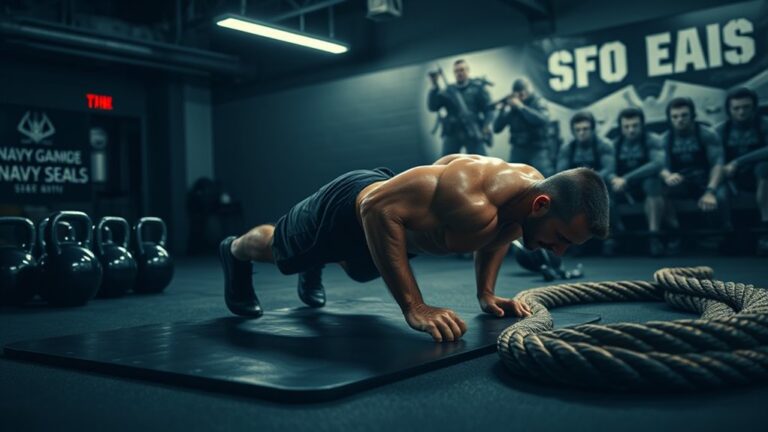How Functional Training Improves Everyday Movements
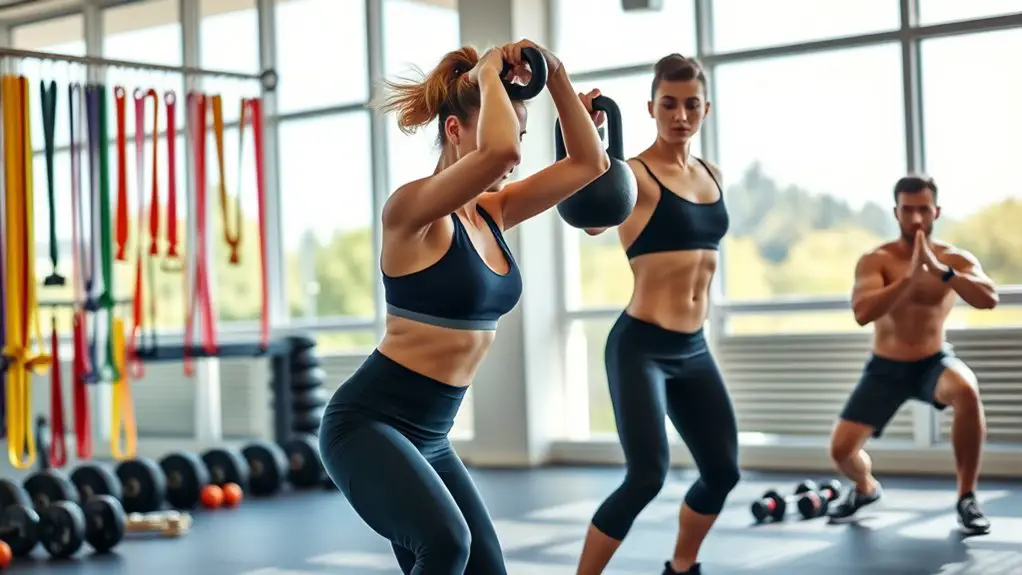
Functional training improves your everyday movements by mimicking real-life tasks, like lifting, bending, and walking. This type of training engages multiple muscle groups, enhances strength, and improves balance and coordination. As a result, simple chores and activities become easier and safer, reducing your risk of injury. You’ll also notice increased flexibility and better overall performance in daily routines. Explore how you can incorporate functional exercises into your life for even greater benefits.
Understanding Functional Training
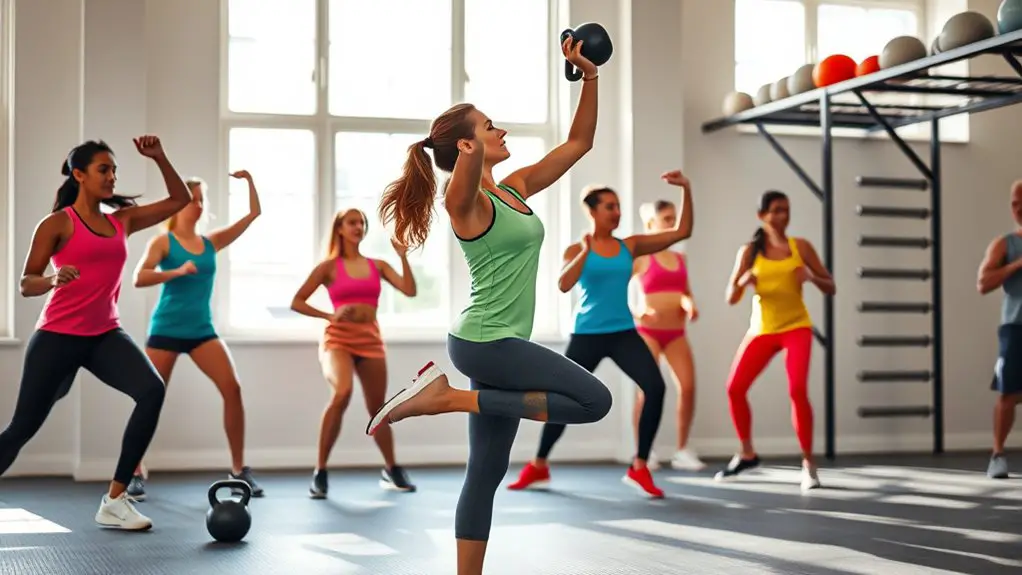
When you think about fitness, you might picture traditional workouts at the gym, but functional training takes a different approach. Instead of focusing solely on building muscle in isolation, functional fitness emphasizes real-life movement patterns that you use every day. This training method mimics the activities you perform in daily life, like lifting groceries, climbing stairs, or bending down to tie your shoes. By incorporating exercises that engage multiple muscle groups, functional training not only enhances your strength but also improves your balance, coordination, and flexibility.
You’ll find that functional fitness workouts often include movements like squats, lunges, and push-ups, which are designed to strengthen your body’s ability to perform everyday tasks. Additionally, incorporating high row machine alternatives can further enhance upper back strength, improving posture and overall functional movement. This practical focus helps you develop a stronger foundation, making daily activities easier and reducing the risk of injury. Embracing functional training can truly transform how you move in your day-to-day life.
Key Benefits of Functional Training
Functional training offers a multitude of benefits that extend far beyond the gym. By focusing on functional fitness, you’ll enhance your movement efficiency, making everyday tasks easier and safer. Here are three key benefits you can expect:
- Improved Strength and Balance: Engaging in functional movements strengthens your core and stabilizing muscles, which reduces the risk of injury.
- Enhanced Coordination: These exercises mimic real-life activities, improving your ability to perform tasks like lifting, bending, or reaching with grace and control.
- Increased Flexibility: Functional training often incorporates dynamic stretches, promoting greater range of motion and reducing stiffness.
Embracing functional training not only boosts your performance in daily life but also empowers you to move with confidence. So, whether you’re playing with kids or tackling chores, you’ll feel more capable and agile.
Core Exercises for Everyday Movements

Your core is the foundation of almost every movement you make, from bending down to pick something up to twisting while reaching for an item. By focusing on key core exercises, you can enhance your stability and strength, making everyday tasks easier and safer. Let’s explore how integrating these exercises into your routine can transform the way you move. Additionally, incorporating proper technique in exercises can help minimize injury risk and improve overall performance.
Importance of Core Stability
Core stability plays an essential role in enhancing everyday movements, making it crucial for everyone, regardless of fitness level. When you focus on core strength and stability training, you’re not just improving athletic performance; you’re also setting yourself up for better posture and reduced injury risk in daily activities.
Here are a few key benefits of core stability:
- Improved Balance: A strong core helps maintain your balance, whether you’re walking, bending, or lifting.
- Enhanced Posture: Core stability supports your spine, promoting proper alignment during everyday tasks.
- Injury Prevention: Strengthening your core reduces strain on your back and joints, minimizing the risk of injury.
Incorporating core stability exercises into your routine can make a significant difference in your daily movements.
Key Core Exercises
Building on the importance of core stability, integrating specific exercises into your routine can greatly enhance your ability to perform everyday movements more effectively. Start with planks, which engage your entire core while promoting strength and endurance. Incorporate Russian twists to improve rotational stability, essential for activities like reaching or twisting. Add bird-dogs to develop balance and coordination, vital for dynamic movements such as walking or running. Finally, try dead bugs to enhance core control and support your spine during various tasks. These exercises not only boost core stability but also prepare your body for the demands of daily life. By regularly practicing these key core exercises, you’ll notice a significant improvement in your overall movement efficiency.
Everyday Movement Integration
When you integrate core exercises into your daily routine, you’ll find that even the simplest movements become easier and more efficient. Strengthening your core not only enhances your stability but also improves your overall balance training. You’ll notice that common tasks become less strenuous as you refine your movement patterns.
To maximize the benefits, consider incorporating these core exercises:
- Planks: Build endurance and stability for various activities.
- Russian Twists: Improve rotational strength for daily tasks like reaching.
- Bird-Dogs: Enhance coordination and balance while engaging multiple muscle groups.
How to Incorporate Functional Training Into Your Routine
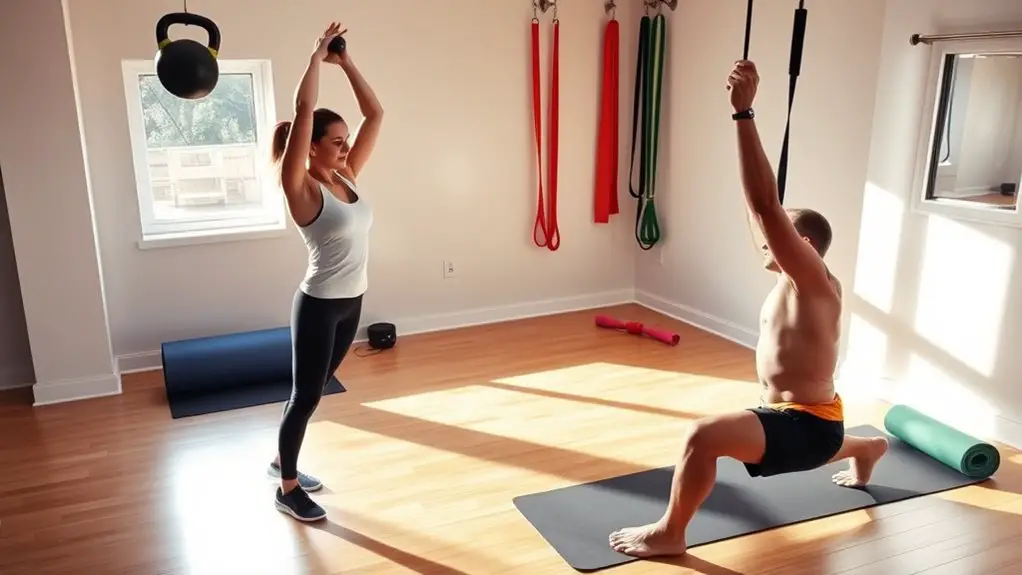
Incorporating functional training into your routine can be a game-changer for enhancing everyday movements and overall fitness. Start by integrating bodyweight exercises like squats, lunges, and push-ups. These moves mimic daily activities and build strength where you need it most. You don’t need a gym; just use your body weight and focus on form.
Next, add resistance bands to your workouts. They’re versatile and can challenge your muscles in ways that free weights may not. Try banded rows or overhead presses to engage your core while improving stability and strength.
Aim for 2-3 sessions per week, mixing bodyweight exercises and resistance band workouts. This combination not only boosts your functional fitness but also keeps your routine fresh and engaging. Gradually increase intensity or complexity as you progress, and you’ll notice improved performance in your daily movements in no time!
Functional Training for Injury Prevention
When it comes to injury prevention, functional training focuses on strengthening your stabilizing muscles and enhancing joint mobility. By incorporating exercises that target these areas, you can improve your overall stability and reduce the risk of injuries in daily activities. It’s all about making your body more resilient and ready for whatever life throws at you.
Strengthening Stabilizing Muscles
Although many people focus on building larger muscles for strength, it’s equally important to strengthen stabilizing muscles to prevent injuries during everyday activities. These stabilizer muscles play a vital role in ensuring proper muscle coordination, allowing you to perform tasks with efficiency and safety.
Here are some effective ways to strengthen these muscles:
- Balance exercises: Incorporate movements like single-leg stands or stability ball workouts.
- Core training: Focus on planks and rotational exercises to engage your core stabilizers.
- Functional movements: Use exercises like lunges or squats with proper form to build strength and stability.
Enhancing Joint Mobility
To stay active and prevent injuries, enhancing joint mobility is essential for everyone, especially if you engage in functional training. Improved joint flexibility allows for smoother movements, reducing the risk of strains and sprains. Incorporating mobility exercises into your routine can greatly boost your overall physical performance and daily activities.
Here’s a quick guide to some effective mobility exercises:
| Exercise | Benefits |
|---|---|
| Hip Circles | Increases hip flexibility |
| Shoulder Rolls | Enhances shoulder mobility |
| Ankle Pumps | Improves ankle flexibility |
| Cat-Cow Stretch | Opens up the spine |
| Lateral Lunges | Strengthens inner thighs |
Enhancing Mobility and Flexibility Through Functional Training
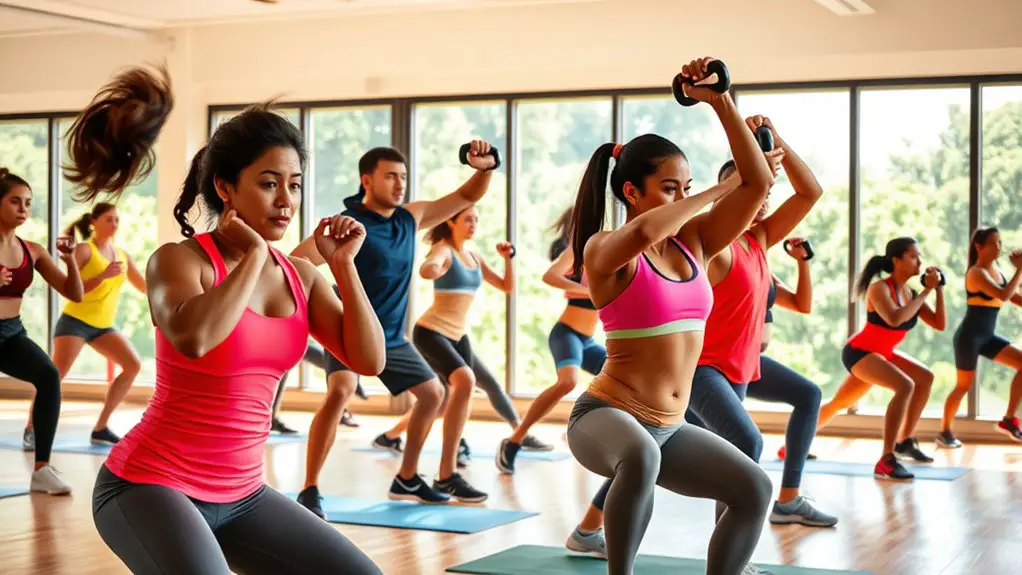
Here are some practical benefits of functional training for your flexibility and mobility:
- Dynamic stretching: Engaging in movements like leg swings and arm circles can improve your range of motion and prepare your body for activity.
- Balance drills: Exercises that challenge your stability, such as single-leg stands, not only enhance balance but also promote flexibility in your joints.
- Full-body movements: Activities like squats and lunges help you stretch and strengthen multiple muscle groups simultaneously, making everyday tasks easier. Incorporating low impact alternatives like exercise bands can further enhance your flexibility and mobility without putting too much strain on your joints.
Incorporating these elements into your routine can lead to greater overall agility and ease in your daily activities. Embrace functional training for a more flexible and mobile you!
Success Stories: Real-Life Transformations With Functional Training
Functional training has transformed the lives of countless individuals, showcasing its remarkable effectiveness beyond traditional workouts. You might be surprised to learn about the many transformation journeys people have undertaken through this approach. Take Sarah, for instance. After struggling with daily tasks due to back pain, she began functional training and quickly noticed improvements in her strength and mobility. Her personal testimonial highlights how she can now lift her children with ease and enjoy activities she once avoided.
Similarly, Mike, a busy professional, found himself fatigued and unable to keep up with his kids. Through tailored functional exercises, he regained energy and improved his overall fitness. These personal stories illustrate the profound impact functional training can have on everyday movements. By focusing on real-life applications, you too can experience these benefits, making your own journey towards improved functionality and health.
Frequently Asked Questions
Can Functional Training Help With Sports Performance?
Yes, functional training can greatly enhance your sports performance. By focusing on movements that mimic the demands of your sport, you’ll improve your sports agility and strength endurance. This type of training helps develop core stability, balance, and coordination, which are vital for peak performance. You’ll find that as you build these foundational skills, your overall athletic ability and efficiency in your chosen sport will improve, giving you that competitive edge.
What Equipment Is Needed for Functional Training?
When you think of functional training, you might picture heavy weights versus simple bodyweight movements. Yet, both play an essential role. For effective workouts, grab a kettlebell for those dynamic exercises that build strength and stability. Don’t forget your own body; using it as resistance offers amazing benefits too! With just these tools, you can create a versatile training routine that enhances your overall fitness and prepares you for everyday challenges.
Is Functional Training Suitable for Seniors?
Yes, functional training is suitable for seniors! It focuses on improving balance and strength, which are essential as you age. Incorporating balance exercises helps enhance stability, reducing the risk of falls. Strength training builds muscle, making everyday tasks easier and safer. You can tailor workouts to fit your fitness level, ensuring they’re both effective and enjoyable. Remember, it’s always a good idea to consult a healthcare professional before starting any new exercise program.
How Often Should I Do Functional Training?
How often you should do functional training really depends on your fitness level and goals. Generally, aiming for 2 to 3 sessions per week is a solid frequency guideline. This allows you to build strength and improve your movement patterns while giving your body time to recover. Remember, training consistency is key—sticking to a schedule helps you stay on track and see progress over time. Make it a regular part of your routine!
Can Functional Training Be Done at Home?
Sure, you might think functional training needs fancy equipment, but that’s not true! You can absolutely do it at home using bodyweight exercises. Simple moves like squats, lunges, and planks are perfect for home workouts and help you build strength and flexibility. Plus, you can easily modify them to fit your fitness level. So, clear some space in your living room, and get started with a routine that fits your lifestyle!


